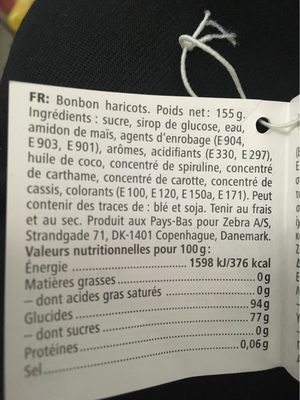Candy beans - Tiger - 155 g
Aquesta pàgina del producte no està completa. Podeu ajudar a completar-la editant-la i afegint-hi més dades a partir de les fotos ja disponibles, o fent-ne més amb l'aplicació de androide o iPhone / iPad. Gràcies!
×
Codi de barres: 0200030035878 (EAN / EAN-13) 200030035878 (UPC / UPC-A)
Quantitat: 155 g
Marques: Tiger, Flying Tiger
Categories: Snacks, Aperitius dolços, Llaminadures, en:Caramels
Matching with your preferences
Entorn
Empaquetament
Transport
Report a problem
Fonts de dades
Producte afegit per kiliweb
Última modificació de la pàgina del producte per roboto-app.
La pàgina del producte, també editada per acuario, elcoco, musarana, openfoodfacts-contributors, yuka.Ylo4bEcvMWFyUDBLd2M4UTRobnAxTmwvMzdHaVZEcXpLN29ZSVE9PQ.
Si les dades són incorrectes o incompletes, pot completar o corregir editant aquesta pàgina.










